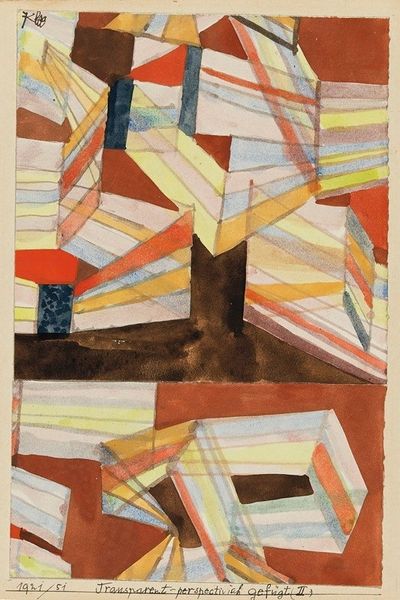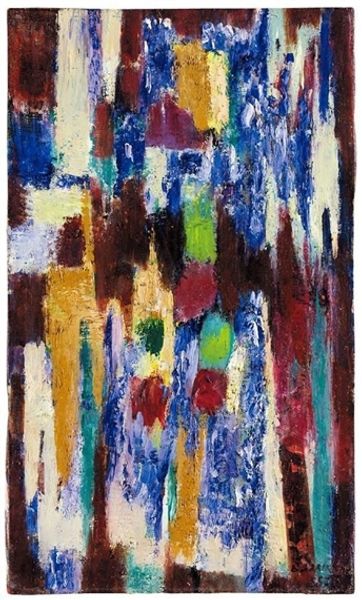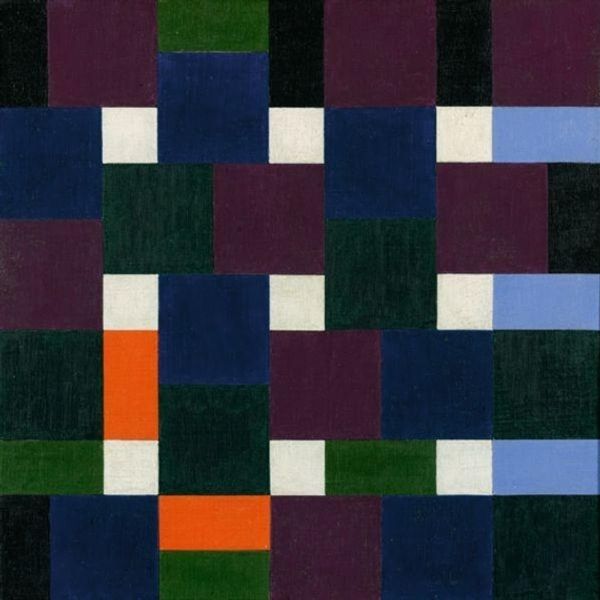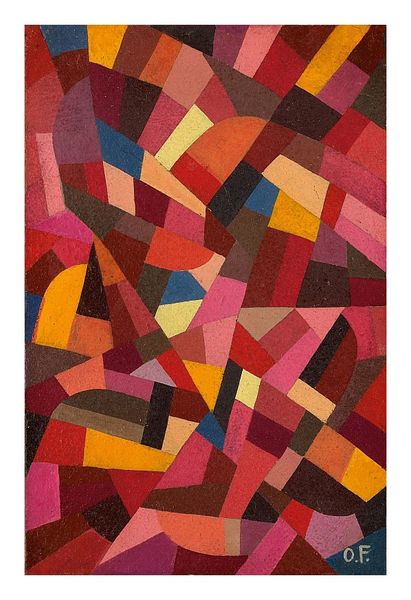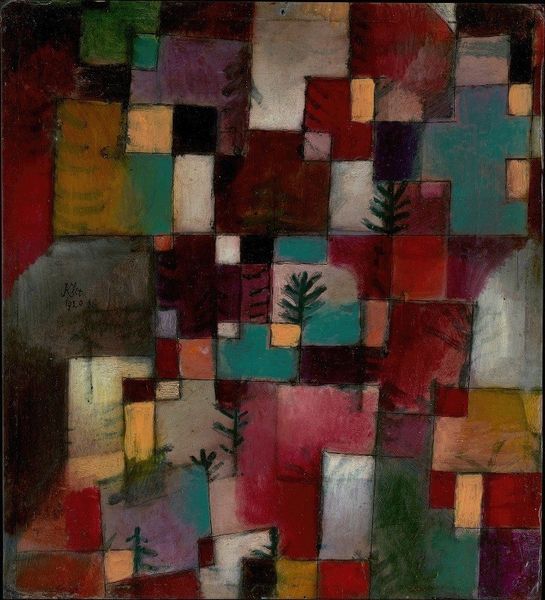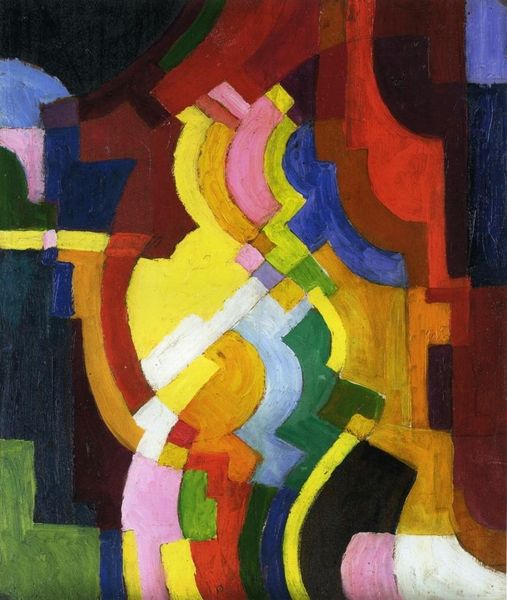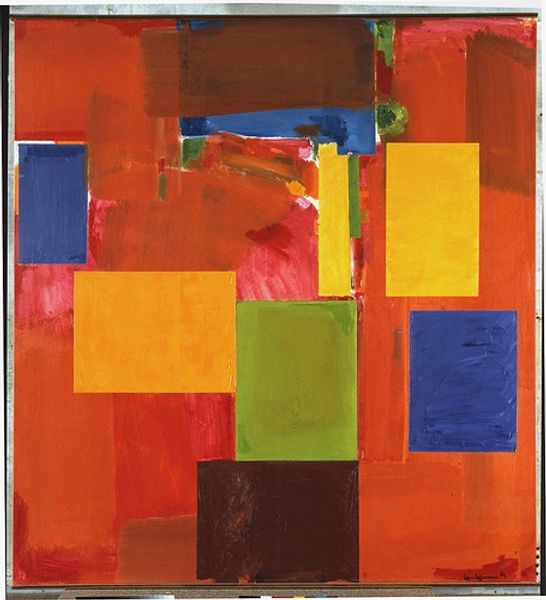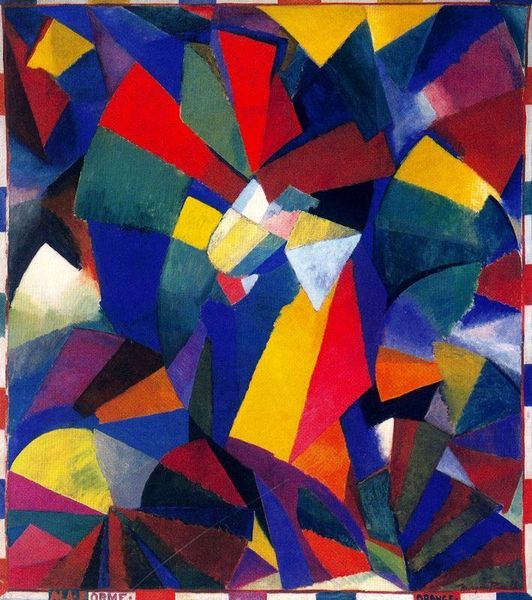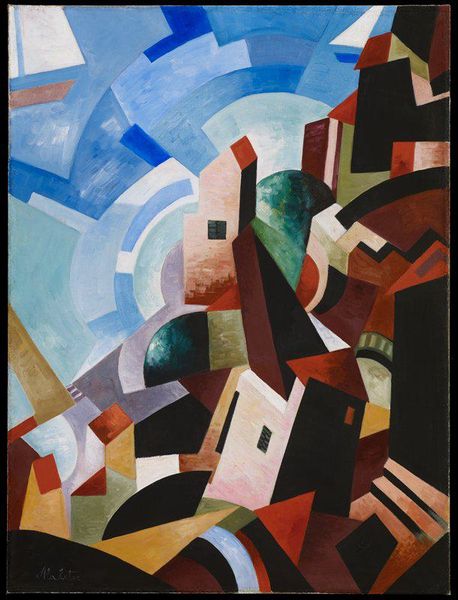
painting, oil-paint
#
impressionist
#
cubism
#
abstract painting
#
painting
#
oil-paint
#
expressionism
#
geometric-abstraction
#
abstraction
#
modernism
#
expressionist
Dimensions: 36 x 31 cm
Copyright: Public domain
Editor: So, here we have August Macke’s "Colourful Shapes" from 1913, an oil painting playing with geometric abstraction. It feels… deliberately disjointed, like a puzzle with mismatched pieces. What do you make of it? Curator: Disjointed is an interesting word. I see it more as a response to the rapid changes happening in early 20th-century society. Industrialization, urbanization… everything was being reshaped. Doesn't this image echo that sense of fragmented reality, reflecting social upheaval through abstract form? Editor: I can see that. Was Macke consciously trying to make a political statement with his art, or was he just experimenting with new styles? Curator: The line is often blurred. Expressionists and Cubists like Macke were not necessarily creating art as direct political protest, but the very act of rejecting traditional representation was a kind of rebellion against established social norms. It challenged viewers' expectations, didn't it? Consider how this differed from academic art, still clinging to traditional values, upheld by institutional power. Editor: So, by breaking down images, they were also breaking down societal structures in a way? Curator: Precisely! And consider how the emerging gallery system helped support these radical artists, creating space for these unconventional images, while other social spheres lagged. Editor: It's fascinating to see how art mirrors and reacts to broader historical shifts. I never really considered art like this as inherently political. Curator: Understanding the context really opens up a work like "Colourful Shapes," doesn't it? Now, when you see similar works, will your perceptions be influenced by the artistic movements during those critical times? Editor: Definitely. I'll be looking for those societal reflections within the colours and shapes!
Comments
No comments
Be the first to comment and join the conversation on the ultimate creative platform.

